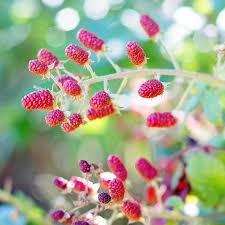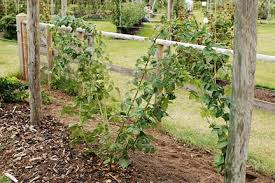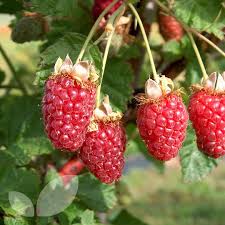As autumn settles in, wild berries such as blackberries appear in abundance along hedgerows, marking the perfect time for seasonal treats like homemade crumbles. These cozy moments not only signal the arrival of fall but also inspire gardeners to start planning for the next growing season. Fall is an ideal time to plant new fruit trees and bushes, as the soil still retains warmth, giving plants a head start before winter arrives.
One exciting addition to any garden is hybrid berries. These are the result of crossbreeding common fruits like blackberries and raspberries, creating unique varieties with distinct flavors and textures. Some well-known hybrid berries include loganberries and jostaberries, while others, like the veitchberry, are less familiar. Additionally, hybrids like the boysenberry and youngberry are crosses between multiple berry species, offering even more diverse options for gardeners.
Popular Hybrid Berries
Hybrid berries come in a variety of sizes, colors, and flavors, making them versatile for all kinds of dishes, from desserts like crumbles to homemade jams or savory sauces. Modern breeding techniques are also improving these berries, with thornless varieties and more manageable plant growth.

Here are some popular hybrid berries to consider for your garden:
- Loganberry: This tangy raspberry-blackberry cross is perfect for cooking, as it holds its shape well. Originating from California, loganberries offer a rich flavor. Thornless varieties are available for easier handling.
- Boysenberry: Known for its wild blackberry taste, boysenberries are large, deep purple berries that grow on thornless canes. A cross between a loganberry and a blackberry, these berries are a delicious and well-behaved choice for your garden.
- Tayberry: With the best qualities of both raspberries and blackberries, tayberries are sweet, red-purple berries that became popular after being bred in Scotland 50 years ago. These berries are a standout hybrid due to their balanced flavor.
- Tummelberry: A close relative of the tayberry, tummelberries have a similar flavor but are known for offering one of the longest picking windows. Their fans claim they have the best flavor of all the hybrids.
Growing and Training Hybrid Berries
Hybrid berries thrive when trained on horizontal supports. You can easily train them by securing galvanized wire to fences or posts, with the bottom wire placed about 60 cm (2 ft) off the ground. Subsequent wires should be spaced 30 cm (1 ft) apart, with the top wire reaching 180 cm (6 ft).
Since hybrid berries produce fruit on the previous season’s growth, after the berries are harvested, simply cut the canes down to ground level. This allows new growth to overwinter and produce fruit the following year. To simplify the process, alternate the sides of the canes each year: tie in the current fruiting canes on one side, and the new growth on the other.

Other tasks include protecting the berries with netting to keep birds away and adding a spring mulch of compost or well-rotted manure—just avoid letting it touch the canes. Watering is necessary during dry periods.
Why Choose Hybrid Berries?
Hybrid berries are an excellent choice for gardeners looking for variety and new flavors. They’re easy to grow, produce high yields, and offer a refreshing change to the traditional fruit garden. Whether you’re a seasoned gardener or just getting started, hybrid berries are a fun and rewarding option to consider. Have you tried growing hybrid berries? Share your experiences in the comments below and help others discover new varieties for their gardens!
